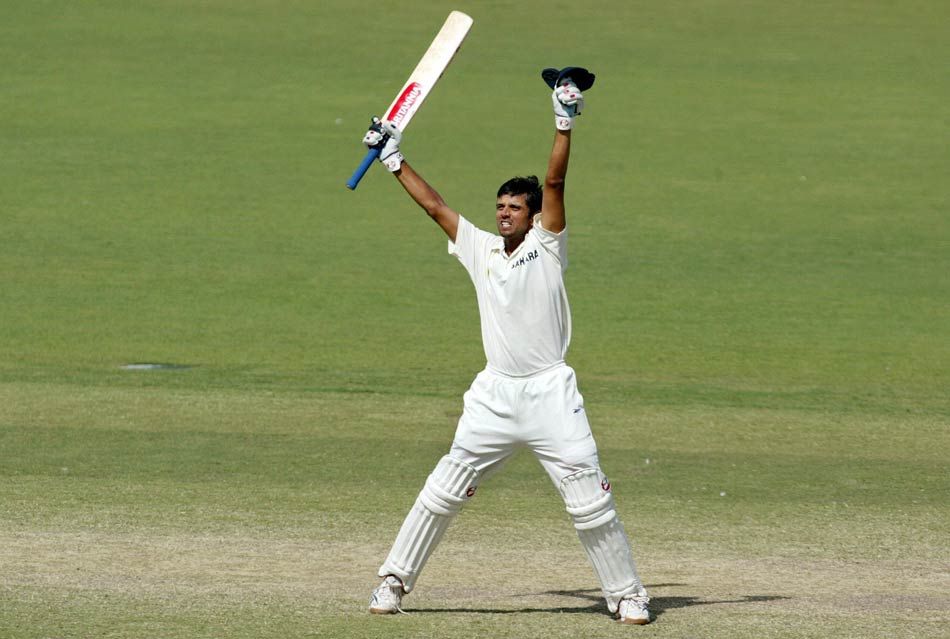
Team India’s very own ‘wall’
“For the strength of the pack is the wolf and the strength of the wolf is the pack”
Rahul Dravid ends the last word of Harsha Bhogle’s book “The Winning Way” with these sagaciously true lines by Rudyard Kipling. It should then be no surprise that Dravid’s own career was as good a reflection of the above lines as any humanly possible. With him completing 40 years, I look back at his affair with Indian cricket – how both fed off each other and changed each other forever.
It goes without saying that for a major quantum of his career, Dravid was the invisible backbone Team India was blessed to have. He was the solid wall that was sturdier than it looked but one that had absolutely no qualms in allowing a slot for a door if the team had to be rescued out. Regardless of the fact that he was always ready to give more than what he had to the team, life never came easy and for most part, Dravid lived the life of an unsung hero. It was probably only towards the end that the immense value of his contributions was understood.
To this writer, Rahul Dravid’s career had three distinct phases, each very craftily leading to the next and in each, the man evolving into the wall that we now so endearingly hold in such high esteem.
Rahul entered the international arena with a strong domestic record behind him and straightaway making his presence felt with a 96 on debut against England at Lord’s. Success stories, more often than not, follow oblique lines. While he was going places in Test cricket, scoring comfortably even on foreign soils, his playing style rendered him an automatic non selection in one dayers. Always the kind to put a lot of pressure on himself, going seemed unimaginably tough for him. Eventually, though, he tweaked his game a little and found place in the limited version, even going on to become the highest run getter in the 1999 world cup. During this whole period, Rahul wasn’t sure whether he belonged to his current place.
Around the advent of the new century, the order of Indian cricket changed; a change that not only transformed our cricketing culture forever but also helped Dravid, the gem, discover himself. Sourav Ganguly became the captain of a team liberated from the burdensome influences of the past and ambitious enough to create a history of its own. This is where I believe the second phase started. Some of the innings which defined his career later on came during this period – the unforgettable 180 at Eden, a mammoth 270 against Pakistan, an inspiring 233 against Australia in Australia and more in similar tune. All these knocks, though, were the outcomes of a vibrant and profound change deep inside. Dravid had suddenly found a culture – and Ganguly had a compelling role in this – where he was valued dearly; where suddenly there were empowering exchanges of energies between him and the team; where it was no more the Indian team, rather it was Team India. Thrill and joy now found Dravid’s address and he discovered that sometimes enjoying the game and letting go of the rest is the most satisfying way not just to play cricket but also for his being. This isn’t to say that his batting style became flamboyant but somewhere, grinding became more purposeful and was done more as a demand than a liability. It is probably in this phase that he reached his summit both as a person and as a batsman. The awareness of what worked for him and the knowledge that he was indispensible (he completed the team jigsaw) in ODI cricket did his and the team’s self esteem a world of good.

With his ‘team first’ attitude, Dravid ceated an environment where he and the team fed off each other.
The third phase is the time after which Dhoni took over. Dravid had to don the hat of a mentor and also take care of of a career that was probably not moving as fluently as it earlier did. A rare loss of form came knocking and the wall looked in shatters for some time. All the years of grinding, struggling and fiddling had toughened him up. It is ironical how something that had once troubled you ends up benefitting surprisingly in future. Towards the end, he found his mojo in England, slamming three centuries in trying conditions. Above all, he didn’t think twice before shifting batting positions to suit the team’s needs.
Ironic as it may sound, his absence is felt more strongly than his presence ever was. Many a times, his savior like knocks catapaulted India out of deep troubles. And yet, Dravid’s most telling contribution must be the selflessness that he ingrained in a team that previously didn’t bat an eyelid in going for personal goals. He showed us how personal glory somewhere lies beneath the team glory and that in the long run, pure pursuit of the latter automatically leads to the former.
I wish you many many more cheerful and enjoyable years and hope that your legacy – both cricketing and non-cricketing – is justifiably carried forward by young Team India.